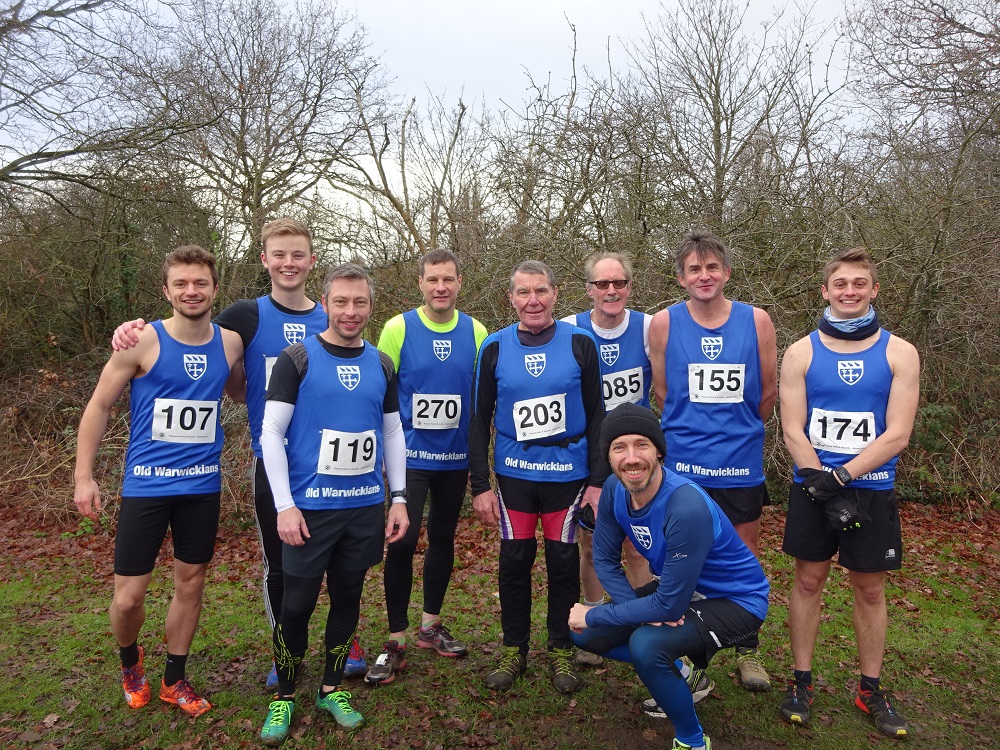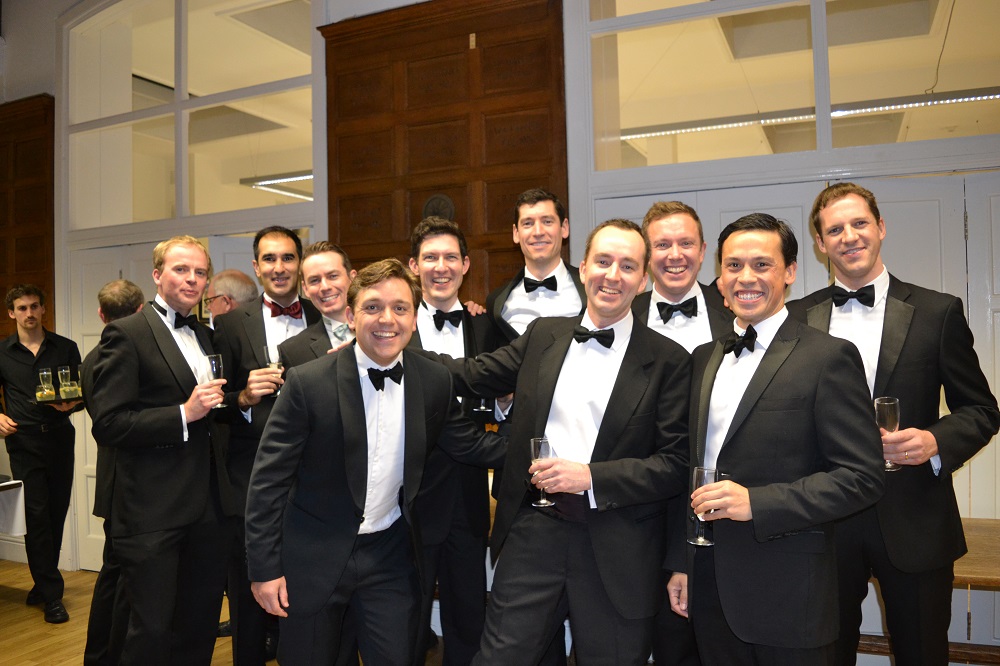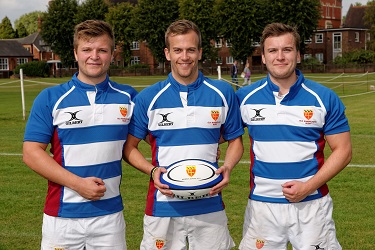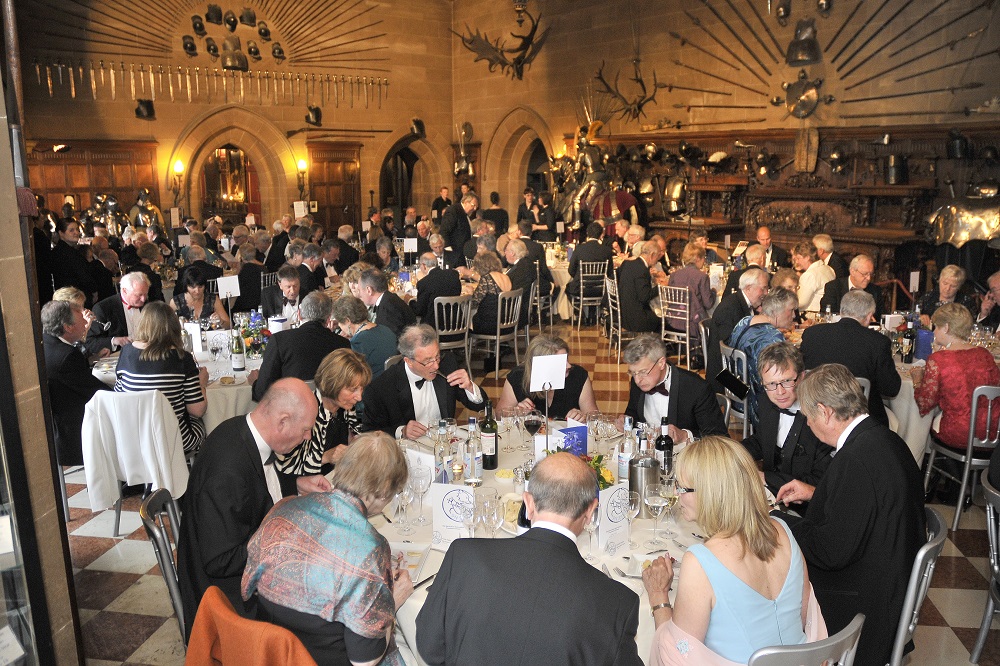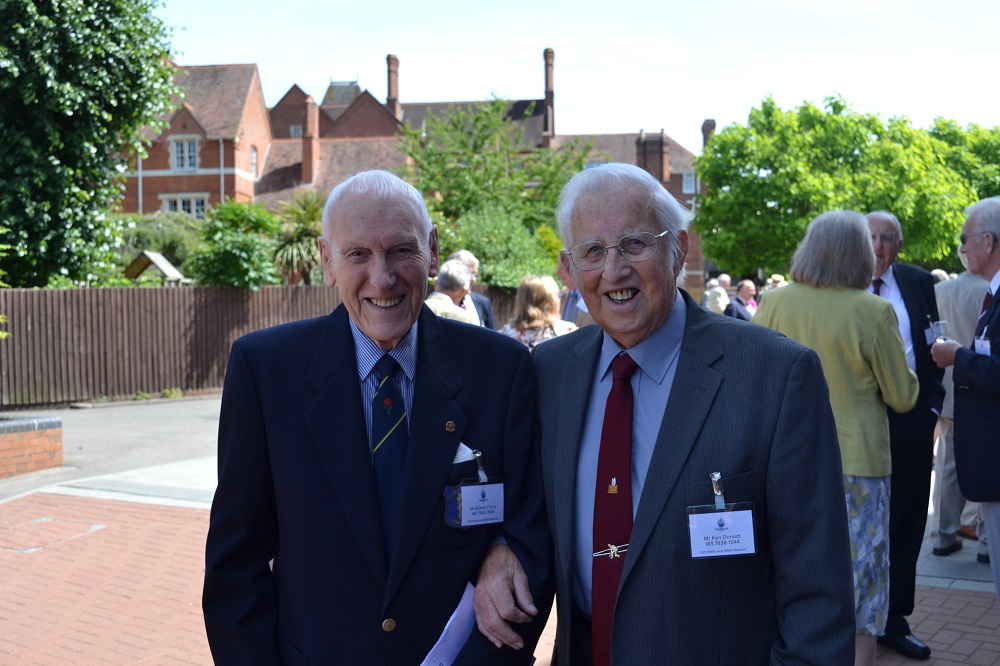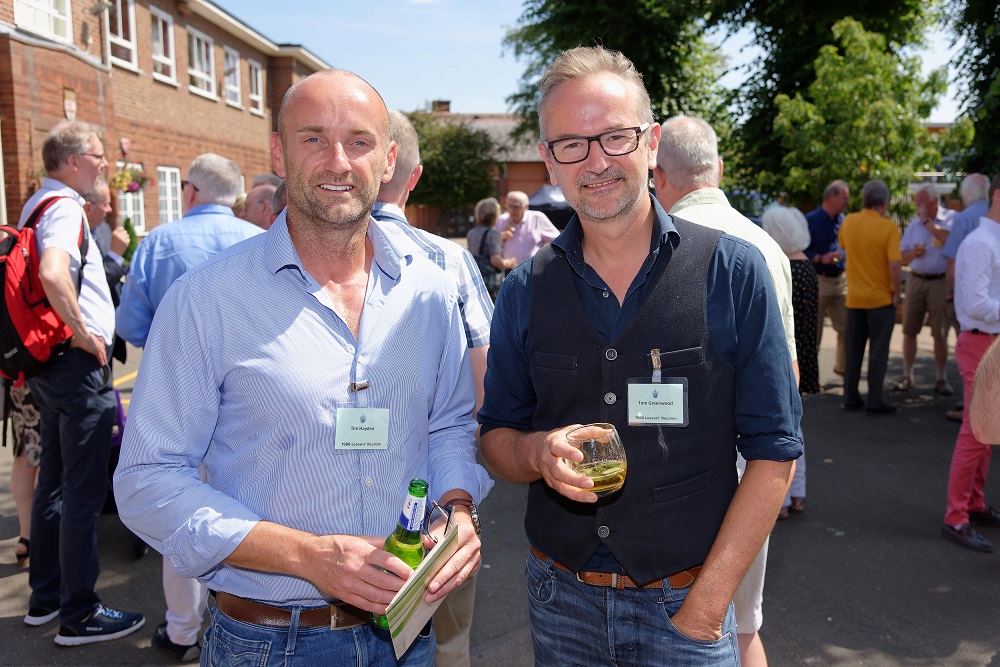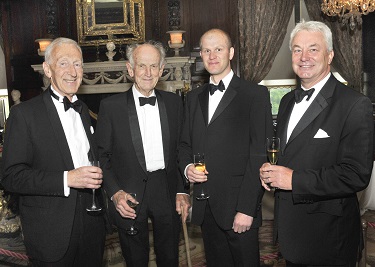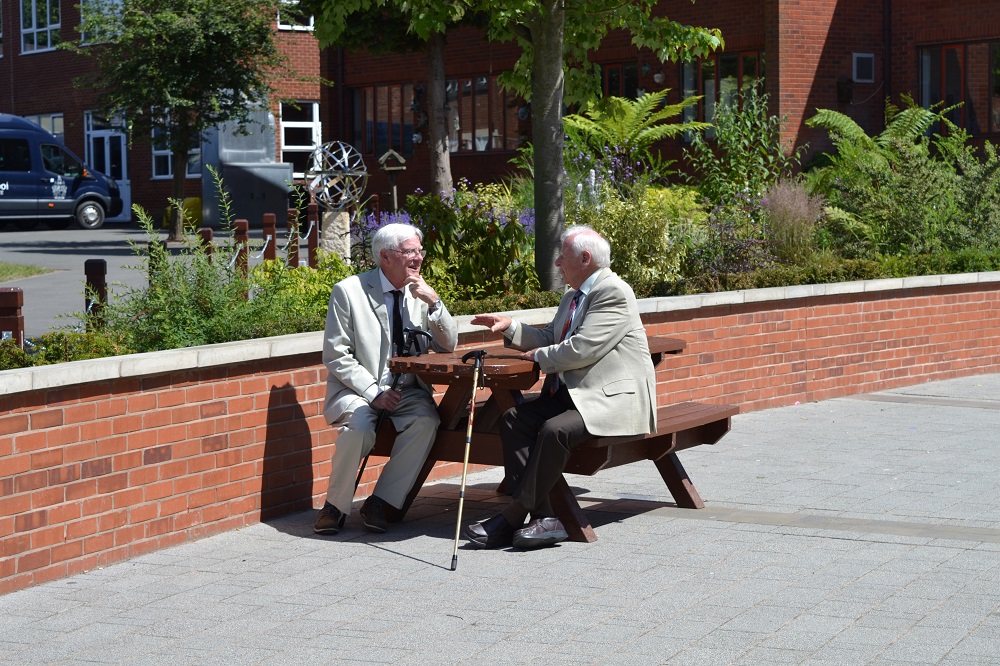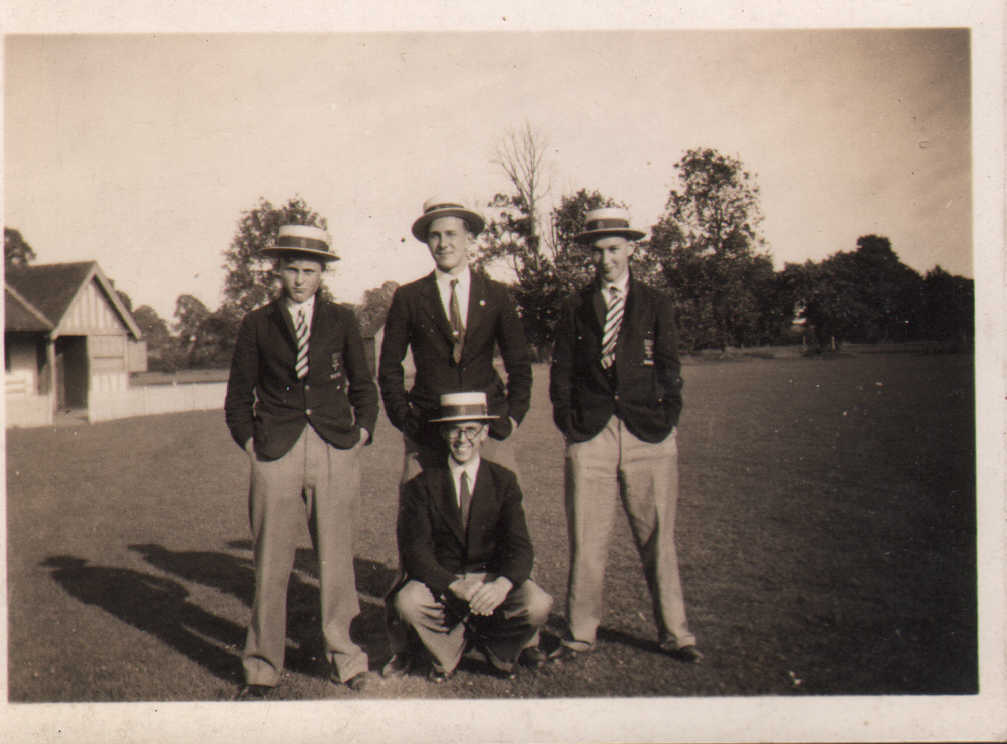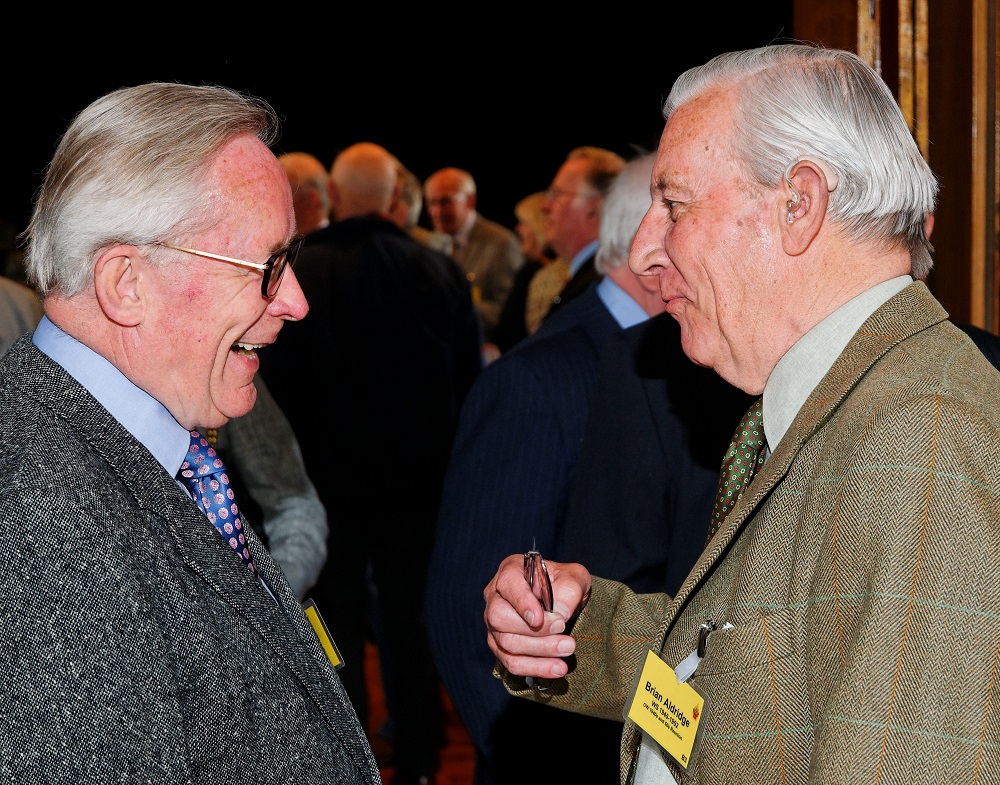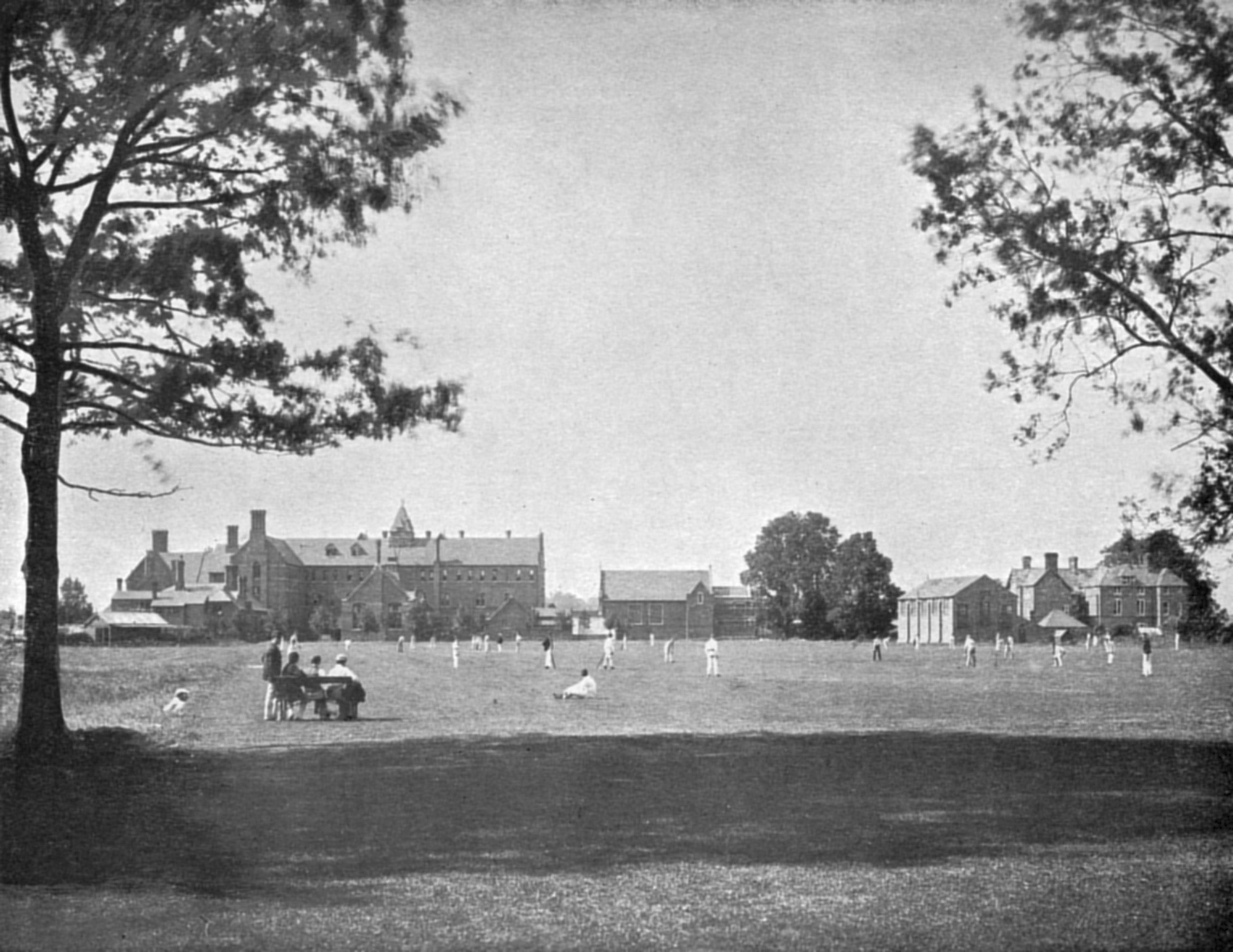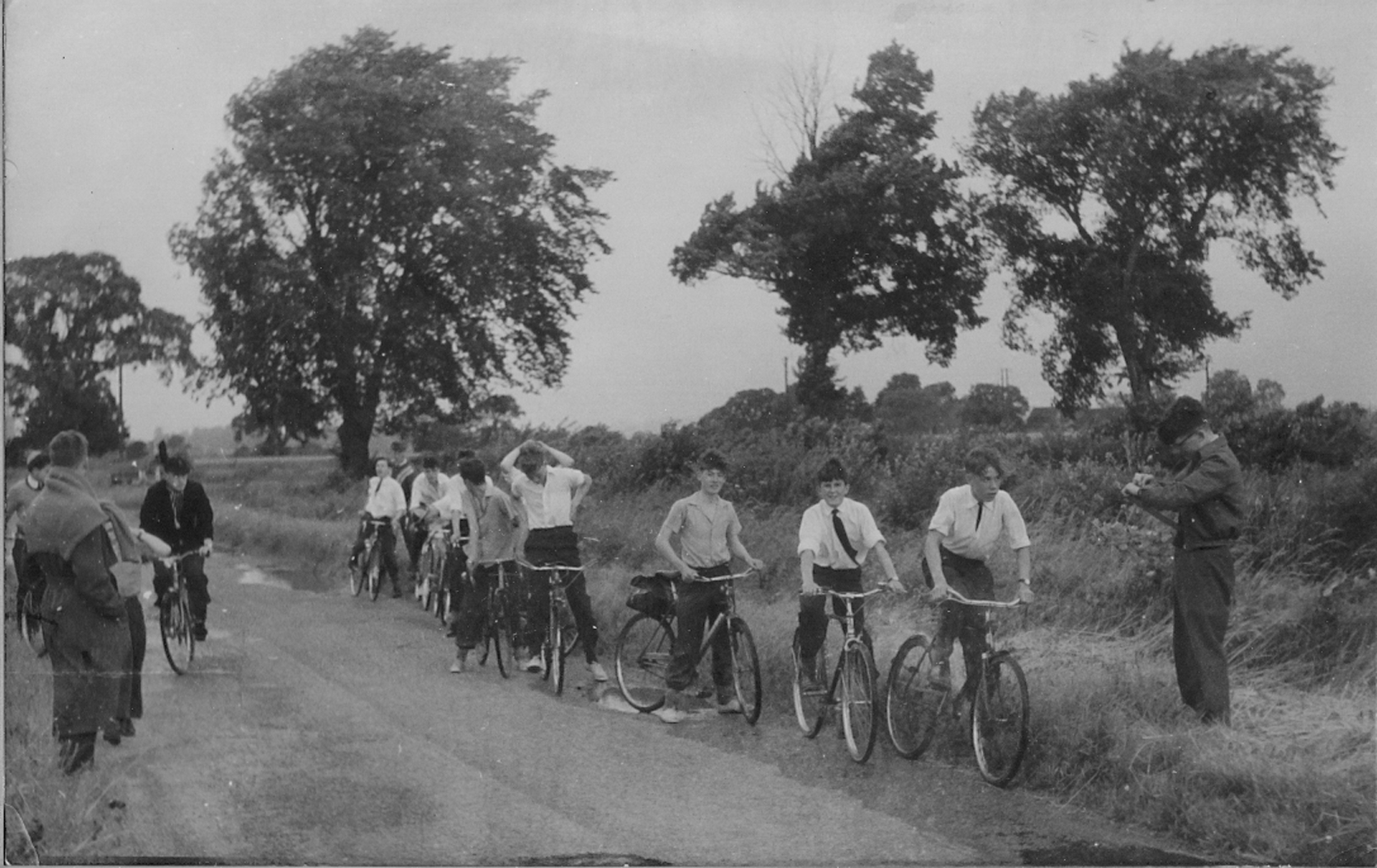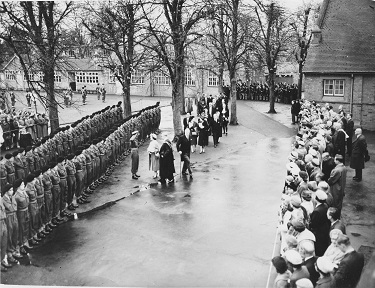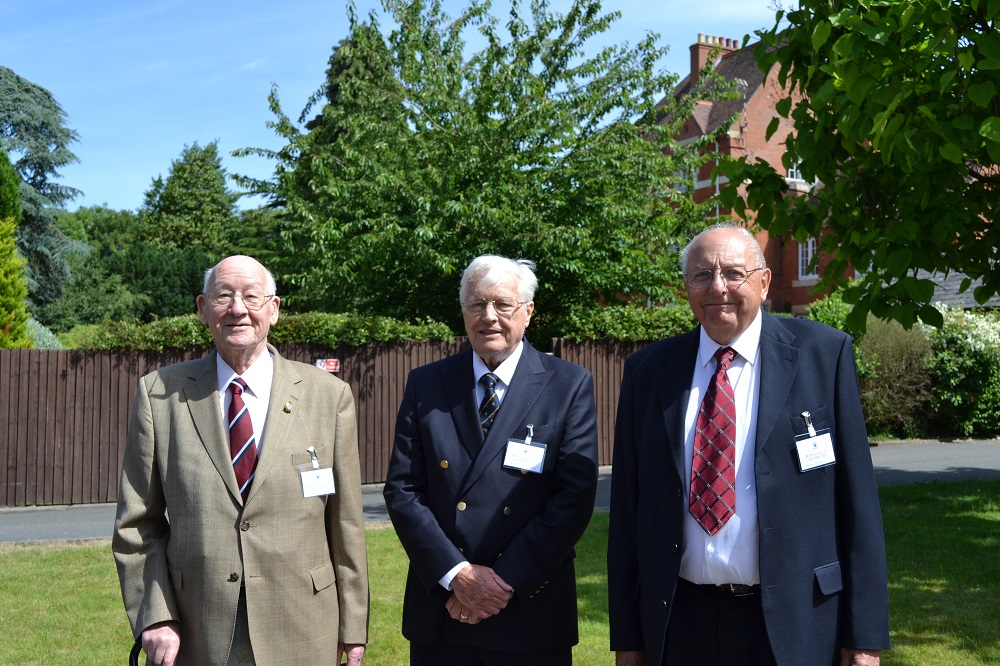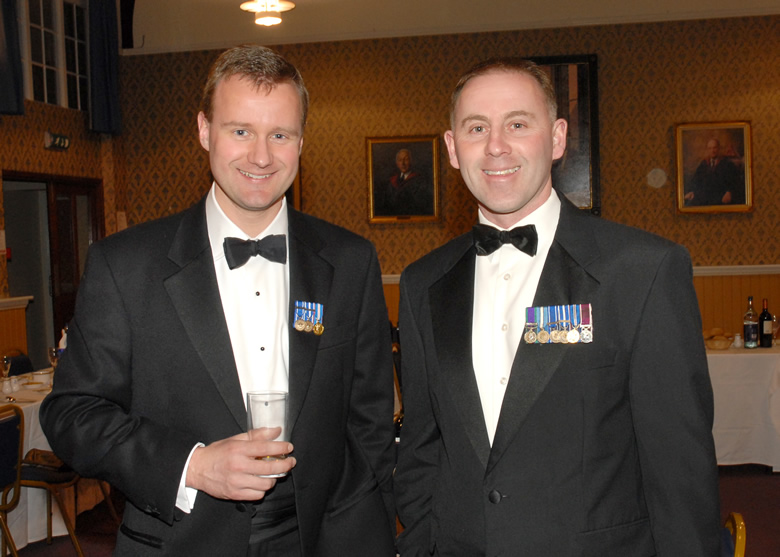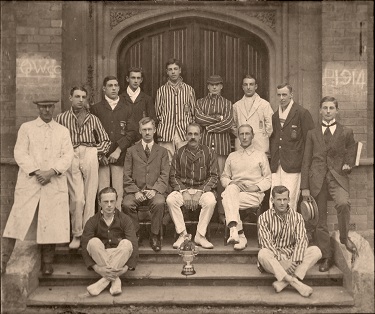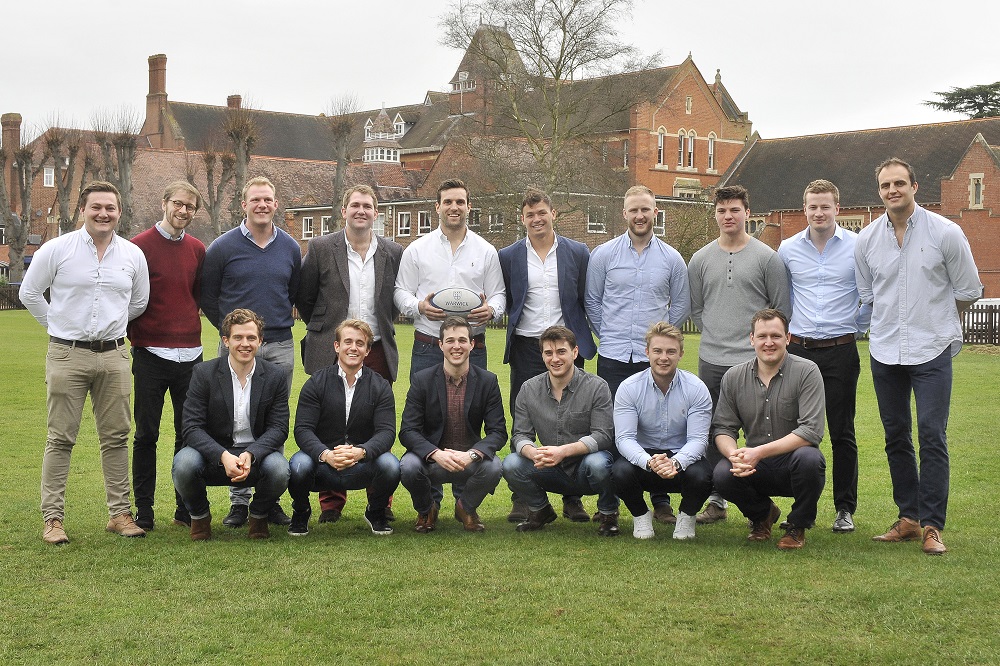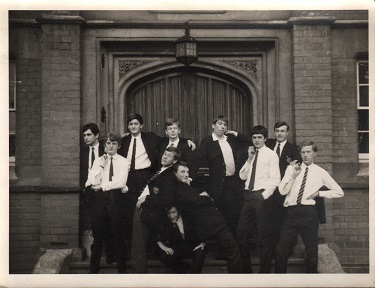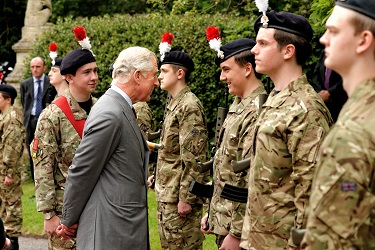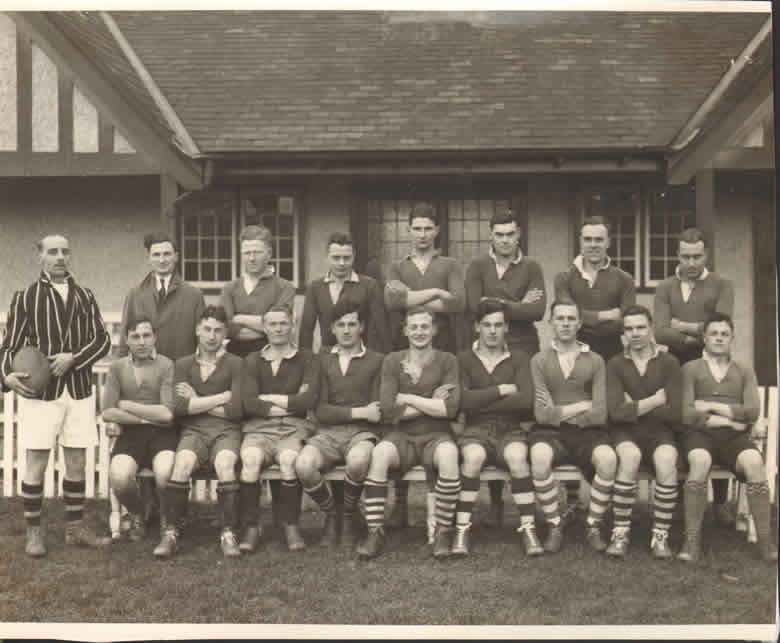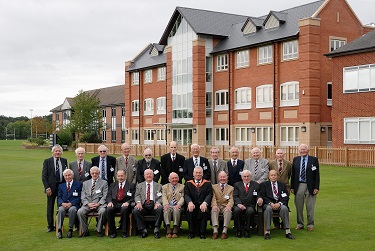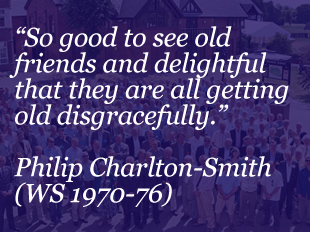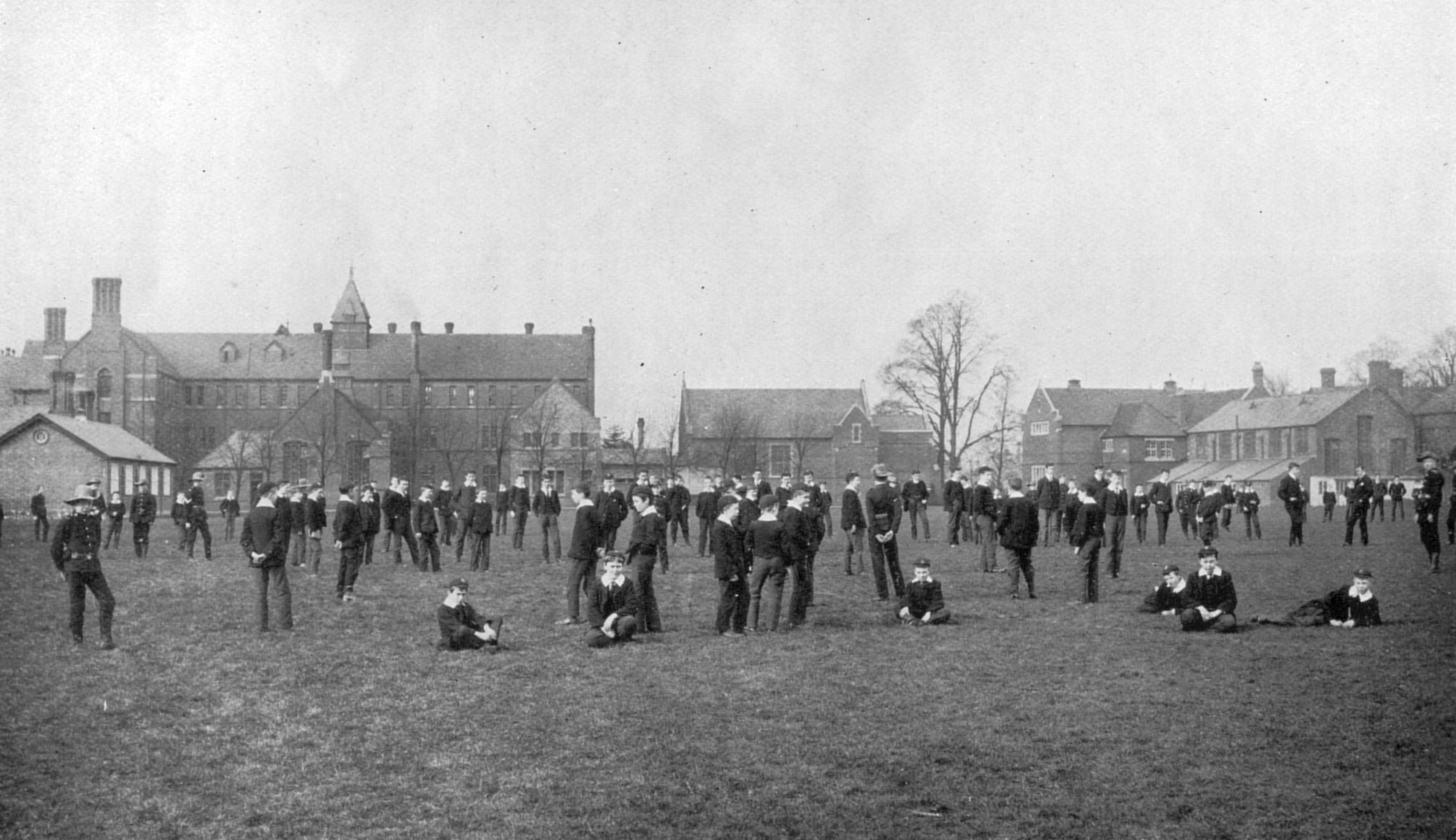Warwick School 1939 - 40
As the war-clouds were gathering, the new headmaster, A. H. B. Bishop seemed determined to modernise life at Warwick School – he had already re-opened the Junior School, which had closed in 1935. School trips had only just got going in earnest in the 1930s, and in 1937 there was a trip to Norway, and in 1938 to Switzerland. Exchanges with pupils from Finland, Denmark and even Germany were still taking place, and early in 1939 Bishop was re-admitted to the Head Masters’ Conference – after a slight disagreement with Arnold Lodge had caused him to be suspended.
However, preparations for war were started in earnest. An ARP Committee was formed in 1938, and boys were “encouraged” to volunteer to assemble gas masks in the Corn Exchange in Warwick. Early in 1939 a huge air-raid shelter system started to be dug by the boys, under the supervision of Major D. G. Pearman, at the eastern end of the school grounds - roughly where the Junior School car park is now.
In September 1939, with the threat of Birmingham being bombed, the whole population of King Edward VI School, Camp Hill, was moved to Warwick, and shared this school’s premises – Warwick School in the mornings, and Camp Hill in the afternoons, until 6:00pm. The boys were billeted locally, and several slept at Warwick Castle. King’s High hosted Camp Hill Girls’ School in exactly the same way during this eight-month period, which has been labelled the Phoney War. The pupils from both Camp Hill Schools drifted back to Birmingham, especially at weekends, and the scheme came to an end in 1940 – which is when Birmingham started to be bombed…
Shortly before Easter 1940 the temperature plummeted – “the great freeze-up”, as it was called. The poor weather, combined with an epidemic of German measles and influenza, meant that an extra week’s holiday was granted at half term, and the digging of the air-raid shelters had to stop because the ground was frozen. Portcullis magazine records that: “The baths were in considerable demand for skating, and those who cared to go further afield enjoyed some good sport in the Castle Park and on private waters at Barford.” To compensate, the summer term of 1940 started very early, on April 18th – and officially finished on July 29th. In June 1940 the school hosted, for tea on the headmaster’s lawn, a group of 300 exhausted soldiers who had just been evacuated from Dunkirk.
By June 1940 up to 50 boys were spending their afternoons at local farms, helping to gather in crops. They were paid 5d or 6d per hour, depending on age, and the work was a very popular activity for three reasons: they missed lessons, they were paid, and they were excused homework. An extra bonus, from the boys’ point of view, was that end-of-year examinations were cancelled, as were Speech Day and the O.T.C. Inspection. The summer term was extended until August 17th for day boys “as a contribution towards the national war effort”, and there was a similar early start to the Michaelmas term on September 2nd – but with “no school on Saturdays”. The attendees of these summer camps were soon put to work on the school site, but they were hugely enjoyed, nevertheless. Four term-time residential whole-form camps “under canvas” were also organised, taking place at Salford Priors near Evesham and at Combrook, near Compton Verney. Three more summer plum-picking camps, lasting a fortnight each, were organised at Barton, near Bidford-on-Avon, and at Wixford Lodge.
This agriculture work had a very unfortunate consequence for the headmaster in that one of the boy workers was injured, and lost an eye, in July 1940 by unsupervised boys throwing mud around at Charlecote. Mr Bishop was sued for damages, and initially lost the case, but won on appeal. The boy, initially awarded compensation, had it withdrawn.
Other activities in support of the war effort were the formation of a “Savings Group”, where over 100 boys made “small weekly or fortnightly contributions to the National cause…. Every penny counts, and loans to the nation will be most gratefully received.” The boundaries of the school fields were also turned into allotments, but “mistakes made by inexperienced gardeners” meant that only “a small show of produce” was able to be planned for the end of July.
The O. T. C. (now called the C. C. F.) was also playing its part in the war effort, by the “training of Local Defence Volunteers and other static defence units” in voluntary evening classes. 500 volunteers had been trained by December 1940. Needless to say, a steady stream of its former members joined the Armed Forces, but already the casualty list was rising – 12 OWs had made the supreme sacrifice by December 1940, half of them from the RAF – but two RAF OWs had been awarded DFCs by then, too. Three OW Prisoners of War were named – one of them was F. W. Mulley (WS 1929 – 36), who spent five years in captivity but used the time to gain a BSc in economics from the University of London. Having been appointed Secretary of State for Defence in 1976, he gained unfortunate notoriety by falling asleep next to HM Queen Elizabeth II during an RAF review in 1977.
By July 1940 the school had lost three members of staff on account of war service. The headmaster found it very hard to recruit replacements, and the staff appointments book records a whole succession of temporary teachers throughout the war. One consequence of the cancellation of Speech Day was that former headmaster H. S. Pyne was invited to give out prizes on the last assembly of term in July, 1940.
In August 1940 A. H. B. Bishop organised and took part in a camp on the school fields “to make up for boys not having a holiday”. The invitation was extended to all local schools, and photographs show a sea of tents having been erected.
In November 1940 came the Coventry Blitz carried out by nearly 450 German bombers. The mediaeval cathedral was deliberately targeted on the night of 14th – 15th November, with 2,300 houses being destroyed and 568 people killed. The flames from the burning city were visible as a glow in the sky from as far away as Chipping Norton – a distance of 40 miles.
On a lighter note, film survives from the summer of 1940 showing the headmaster and the whole school lining up to bid farewell to a boy leaving the school. Claude Falkiner is shown wobbling out of the school gates on his bicycle onto an almost completely empty Myton Road. The fact that he had to cycle all the way back to Boscombe, near Bournemouth, was not deemed to be especially remarkable, but it is also sad to relate that he was shot down and killed over north Africa less than three years later.
An unexpected benefit of this war period was that A. H. B. Bishop was able to report that, by December 1940, the number of boys at the school totalled 413 – “a record in our history”, he declared. However, the war was to drag on for another five years, and it remained his sad duty to announce the deaths of OWs in the conflict, with a total of 65 fatalities by 1945.
G. N. Frykman
March 2020
